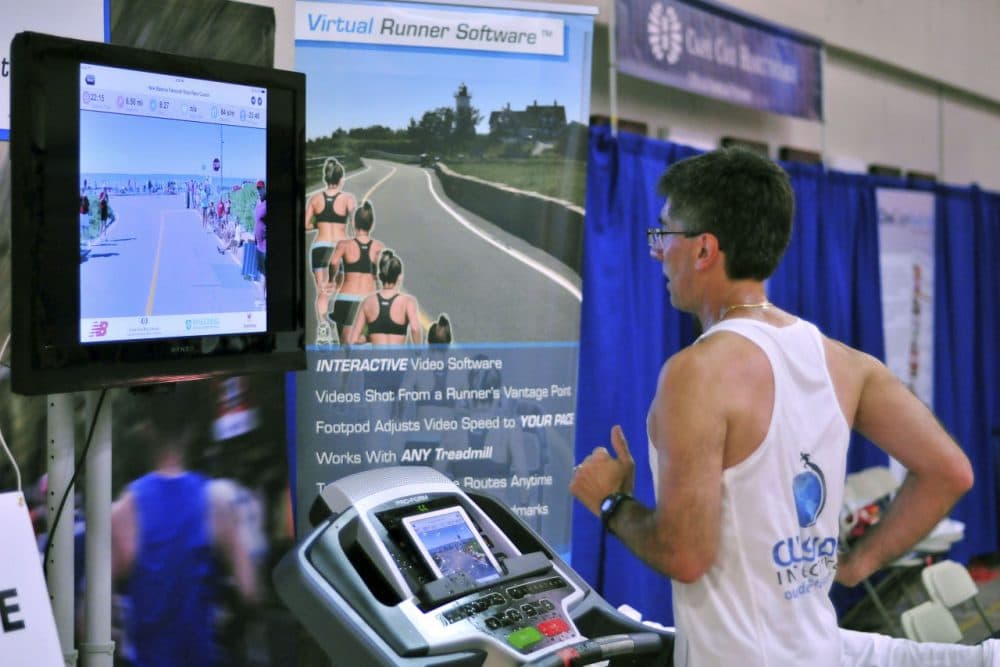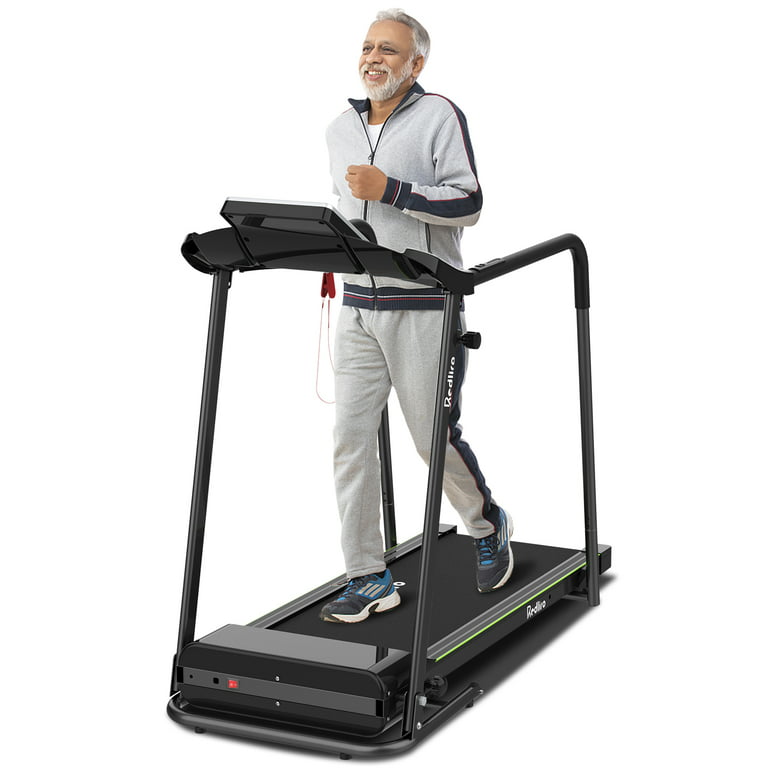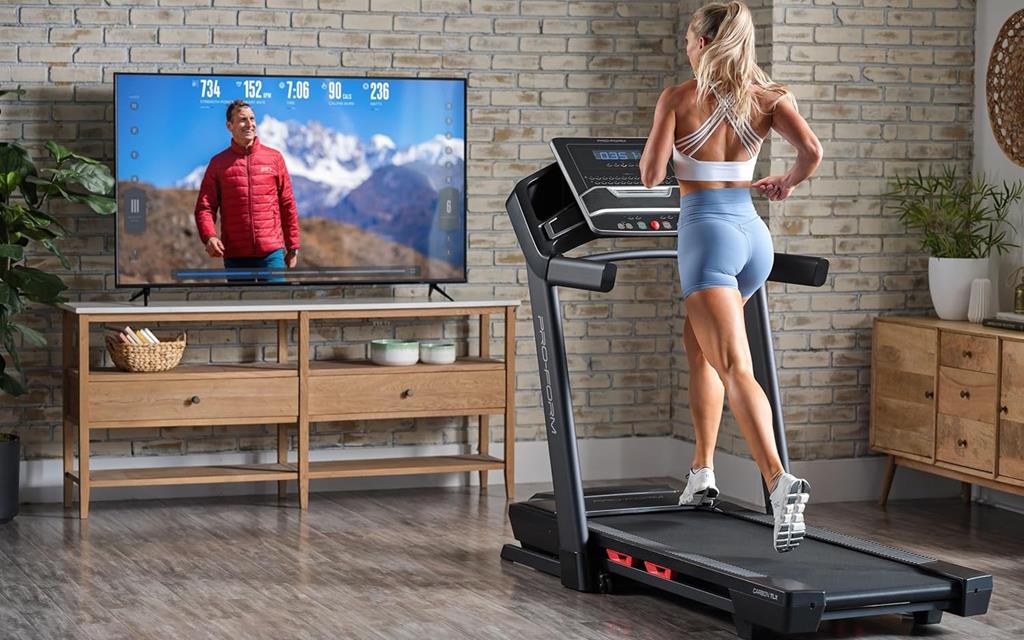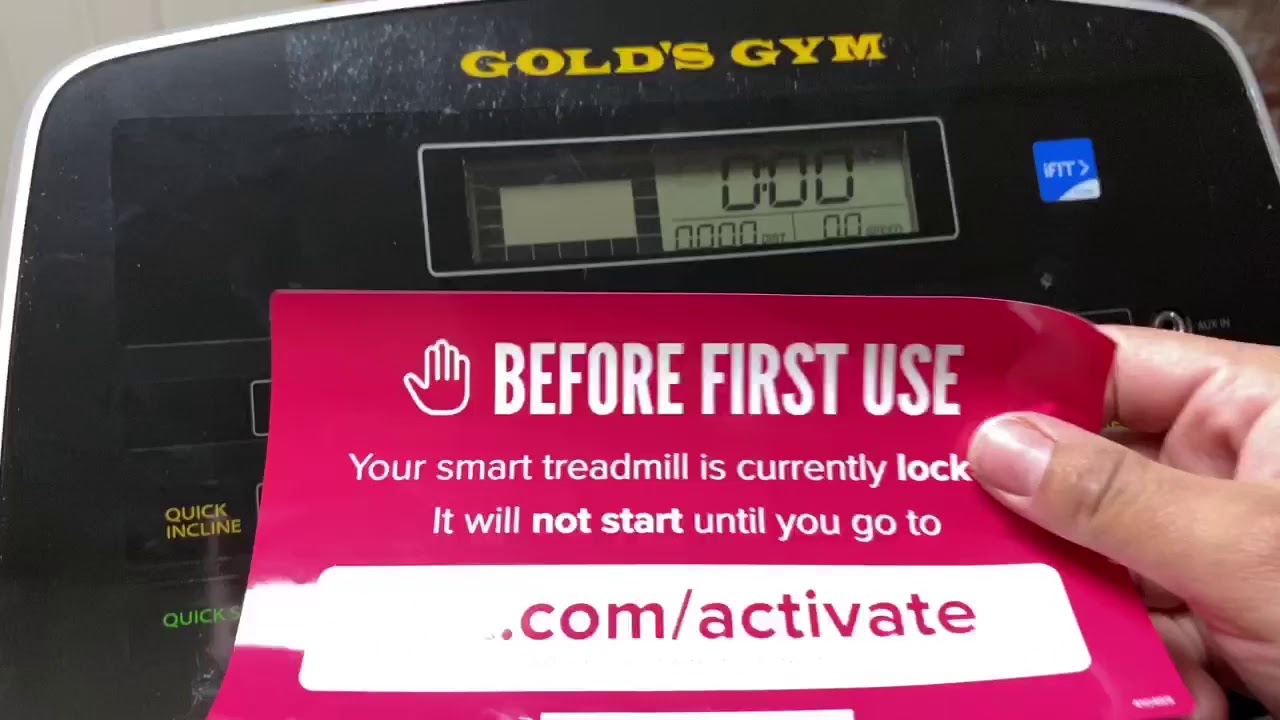Many runners find they are faster outside due to natural terrain and wind resistance. Treadmill runners may not match outdoor speeds due to the machine’s set pace.
Running speed can vary significantly between treadmill workouts and outdoor runs. The outdoor environment challenges runners with varying terrain, inclines, and weather conditions, which can enhance performance and mimic real-world conditions. Conversely, treadmills provide a controlled and consistent setting, often leading to steadier pace but not necessarily faster speeds.
The psychological aspects also play a role; outdoor scenery can be mentally stimulating and motivating, while the static environment of a treadmill might limit some runners’ speed. Tech-savvy treadmills with programmed workouts and real-time feedback can help bridge the gap, but the dynamic nature of outdoor running often leads to increased speed and endurance for many athletes.
The Treadmill Vs. Outdoor Running Debate
Runners often argue about what’s best: treadmill or outdoor running. Each has pros and cons. Choosing between them can impact your speed and performance. Today’s focus lies on understanding the differences. Is one faster than the other? Let’s dive into the specifics.
The Physics Of Treadmill Running
On a treadmill, you stay in place. Your body doesn’t fight air resistance. This can make running seem easier. The moving belt aids leg turnover. This might make you think you’re faster on the treadmill.
- Consistent pace: Treadmills offer a steady speed.
- No wind resistance: Indoors means no battling the breeze.
- Incline control: Easily adjust slope settings.
Yet, physiology can trick you. The treadmill belt’s push might inflate your pace. True speed is likely lower than the display shows.
Environmental Factors Affecting Outside Runs
Running outside presents many variables. Wind, terrain, and weather affect your speed. Hills challenge leg muscles differently than flat treadmill belts.
- Wind resistance: Pushes you to work harder outside.
- Diverse terrain: Trains stronger muscles due to varying surfaces.
- Weather conditions: Sun, rain, or cold can impact pace.
Outdoor running might be slower, but it can boost endurance and strength. The outdoors provide a tougher workout. This makes you stronger for both indoor and outdoor runs.
| Treadmill Running | Outdoor Running |
|---|---|
| Aided by belt | Affected by wind |
| Can set precise speed | Speed varies with terrain |
| Less impact on leg muscles | Builds more muscle strength |

Credit: www.treadmill.run
Measuring Speed And Effort
Are you faster on a treadmill or racing the breeze outside? This question often puzzles runners. To find the answer, understanding how to measure speed and effort becomes vital. Whether it’s the steady belt of a treadmill or the varied terrain outside, the feeling of pace can differ greatly. The key to unveiling your true speed lies in the tools you use and how you perceive your exertion during the run.
Tools And Apps: Tracking Your Pace
In today’s digital age, a plethora of tools exist to measure your running pace. From simple pedometers to advanced GPS watches, tracking your speed has never been easier. Many runners turn to their smartphones as a convenient option. With apps like Strava, Runkeeper, and Nike Run Club, runners can track every step. These apps offer:
- Real-time pace data that helps monitor your speed.
- A map of your route, which is great for outdoor runs.
- Workout history to show progress over time.
- Community features to challenge friends or join virtual races.
Whether on a treadmill or outdoors, these tools provide insights into your performance. Choose one that fits your needs and start gathering data on your speed.
Perceived Effort: Listening To Your Body
Measuring speed isn’t only about numbers; your body’s signals are just as crucial. Perceived effort, or how hard you feel you’re working, varies between treadmill and outdoor runs. On a treadmill, conditions are controlled. No wind, no hills, just you and the machine. This can make it hard to gauge true effort. Outdoors, your body battles the elements. Wind resistance and varied terrain add to the challenge, often making it seem harder.
As you run, listen to your breathing and pay attention to your muscles. Is your breath quick and shallow or steady and deep? Are your legs feeling the burn early on? Answering these questions helps in determining effort. Keep these observations in mind:
- The rhythm of your breath indicates workload intensity.
- Muscle fatigue signals your endurance level.
- Your heart rate can show how hard your body is working.
By understanding perceived effort, you can adjust your pace to match your fitness goals. Whether you’re pushing for speed or endurance, listening to your body is key.
Impact Of Running Surface On Speed
The Impact of Running Surface on Speed plays a significant role in how fast you can go. Differences in surface can change the way your feet strike the ground and push off to propel you forward. Let’s explore the dynamics of treadmill belts and outdoor terrains to understand the unique challenges they present and their effects on running speed.
Treadmill Belt Dynamics
Running on a treadmill often feels different from hitting the pavement outside. One major reason is the treadmill belt dynamics. The moving belt on a treadmill helps with leg turnover. This can make it easier to maintain a steady pace. In fact, some runners find they can go faster on a treadmill for this reason.
- The belt moves beneath your feet, reducing ground contact time.
- A constant speed setting encourages a consistent pace.
- Advanced treadmills can mimic outdoor conditions with incline settings.
Terrain Types And Their Challenges
Different outdoor terrains pose a variety of challenges that can affect your speed. Running outside exposes you to changes that you have to adapt to.
| Terrain Type | Challenges |
|---|---|
| Asphalt | Hard surface, faster pace but higher impact. |
| Trail | Uneven surfaces, requires more stability and agility. |
| Grass | Softer, may decrease speed but lower impact. |
Each terrain requires different muscle engagement and energy output. This can lead to variations in speed compared to running on a flat, consistent treadmill surface.
- Asphalt can lead to a quicker pace but poses a risk for joint stress.
- Trail running challenges your stability and can slow you down.
- Grass provides a softer landing, making it gentler but potentially slower.

Credit: www.wbur.org
Role Of Weather And Conditions
When deciding whether you’re faster on a treadmill or outside, weather and conditions play a crucial role. Your pace can dramatically change due to environmental factors. Let’s dive into how different elements can impact your run.
Adversities Of The Elements: Heat, Cold, Wind
Running against nature’s whims can be challenging. Summer’s blazing heat or winter’s biting cold affects your body’s ability to maintain pace. Gusty winds can also slow you down, forcing extra effort to keep up your speed.
- Heat increases heart rate, causing fatigue quicker.
- Cold weather can tighten muscles, needing more warm-up time.
- Wind resistance forces additional energy expenditure.
Climate Controlled Environments: Pros And Cons
Indoor treadmills offer a consistent environment. You can dodge the adversities of outdoor elements. Below, we outline the pros and cons.
| Climate Controlled Pros | Cons |
|---|---|
| Steady temperature and condition | Lack of natural terrain variation |
| No wind resistance | Possible ease leading to slower pace |
| Ability to control pace precisely | Different muscle engagement than outdoor running |
While a treadmill may seem easier, it doesn’t challenge your body like outdoor runs can. You miss out on natural inclines and varying surfaces that can enhance your strength and agility.
Psychological Factors And Motivation
Understanding the impact of psychological factors and motivation is essential when comparing treadmill and outdoor running. Your mind plays a crucial role in your running performance, and often, it’s not just about physical endurance. Whether you’re faster on a treadmill or outside can depend greatly on these mental aspects.
The Mental Game: Treadmill Vs. Outdoor Scenery
Running indoors versus outdoors can greatly influence your mental stimulation. On the treadmill, your mind battles monotony. The static environment may lead to mental fatigue quicker than the changing landscapes of an outdoor run. Meanwhile, outdoor scenery serves as a visual treat, keeping your brain engaged with varying sights which might help in fighting off thoughts of tiredness or boredom.
Motivational Factors: What Pushes You Harder?
The drive to push your limits varies between the gym and the open road. In a gym, you might find motivation through control over your running conditions and the presence of other people. Outdoors, the challenge of uneven terrain and the desire to reach physical landmarks can serve as powerful motivators. Identifying what propels you forward is key in determining where you might clock faster times.
- Competition: Running alongside others in the gym might spark your competitive spirit.
- Goals: Setting a destination point outdoors offers a tangible target, enhancing your focus.
- Distractions: Engaging landscapes can distract from fatigue, lengthening your endurance.
- Technology: Treadmills with screens and programs can offer motivation with virtual scenery and structured workouts.
Scientific Studies And Runner Experiences
Will you zoom past on a treadmill or outpace others on the asphalt? This question stirs debate among avid runners and fitness enthusiasts. Delving into scientific studies and runner experiences offers insights into the pace we maintain indoors compared to outdoor runs. Let’s uncover what research and real-world feedback suggest about our speed on these different terrains.
Research Highlights On Speed Comparisons
Studies shed light on the speed dynamics of treadmill versus outdoor running. A common tool used in this research is the Rate of Perceived Exertion (RPE). It measures how hard someone feels they are working. Let’s look at some intriguing findings:
- Wind resistance: Outside, the air pushes against us. This resistance is absent on treadmills. Studies show wind can slow us down outdoors.
- Surface firmness: Treadmills have a consistent, softer surface. This can affect speed by altering energy return. Outdoors, variability is the norm.
- Treadmill calibration: Displayed speeds can be off. This might mislead runners about their actual pace. Research highlights the need for calibration.
For precision, studies often employ metabolic carts and GPS devices. Tables and charts in publications quantify the differences in effort and speed between the two settings.
Cadence and stride also play roles. Scientists have observed subtle changes when runners move from one platform to another. Some adapt quickly, others take more time.
Anecdotes From Seasoned Runners
While experiments offer quantitative insights, personal stories provide real-life context. Seasoned runners share varied experiences.
- Treadmill advocates cite speed control as a major plus. They can set a precise pace and stick to it without external factors.
- Outdoor enthusiasts point out natural inclines and varied terrains. These elements can enhance training and mimic actual race conditions.
- Some confess to feeling faster outdoors, credited to visual cues and scenery passing by. It’s a psychological booster, they claim.
For instance, a marathon runner stated that her treadmill practices didn’t fully translate to the road. She had to adjust for the unpredictable elements of open-air routes.
Another runner noticed an improvement in time after incorporating more outdoor runs. He believes the visualization of progress made a significant difference.

Credit: www.facebook.com
Frequently Asked Questions For Are You Faster On A Treadmill Or Outside
Why Do I Run Faster On A Treadmill Than Outside?
Running faster on a treadmill than outside often occurs due to controlled conditions, steady pacing assistance, and lack of environmental factors such as wind resistance and uneven terrain.
Is 1 Mile On The Treadmill The Same As Outside?
Running 1 mile on the treadmill can differ from outside due to varying terrain, weather, and wind resistance. Treadmills might feel easier as they aid leg turnover, making the effort less intense than outdoor conditions.
Do You Run Slower On A Treadmill?
Running speed on a treadmill can vary due to the machine’s settings and personal effort. Some runners might find they go slower on a treadmill as it lacks natural terrain changes and momentum shifts that occur when running outdoors.
How Fast Is 7.0 On A Treadmill?
A treadmill speed of 7. 0 typically means 7 miles per hour (mph), equivalent to an 8:34-minute mile pace.
Conclusion
To wrap up, the terrain plays a key role in your running pace. Whether you blaze trails on a treadmill or conquer the outdoors affects your speed. Both environments offer unique benefits for your fitness goals. Ultimately, your preference and objectives dictate the best choice for you.
Embrace your preferred path and keep moving forward.



